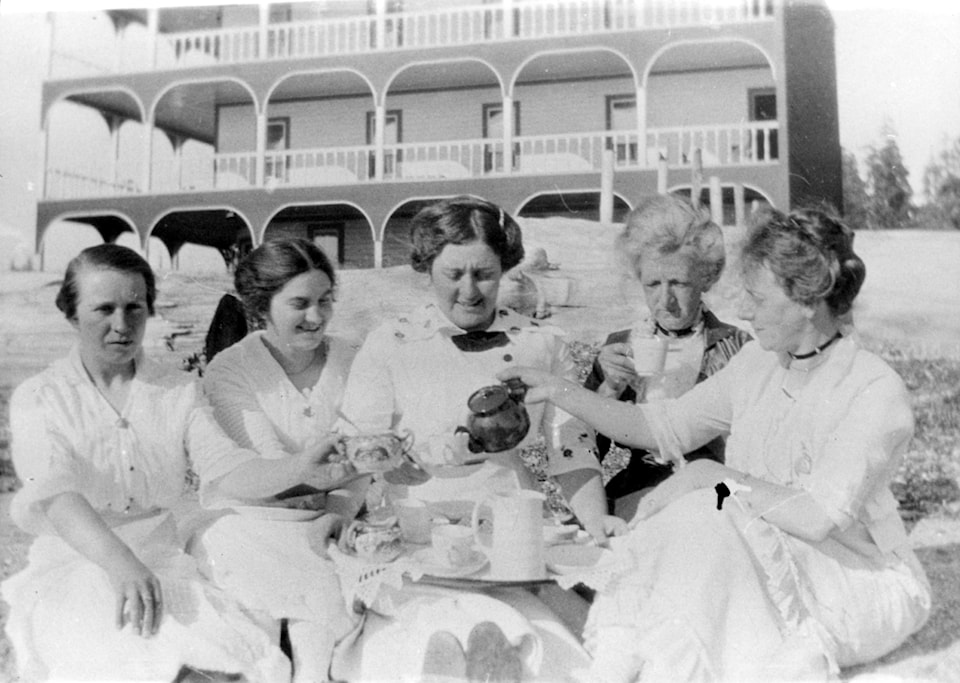EDITOR'S NOTE: From Panorama Ridge to Tynehead to East Clayton, Surrey has become home to practically dozens of cities within cities.
With more than half a million people living in Surrey, each of these communities has created its own identity.
With our new series we call "Neighbourhoods," we are coming to your area simply because we want to tell its story.
Recognizing that every one is unique, both in their character and in the challenges they face, our series will look at each area's struggles and triumphs.
This ongoing feature will showcase Surrey's dozens of neighbourhoods through stories, photos and video.
To share your neighbourhood's story, email us at edit@thenownewspaper.com with the subject line "Neighbourhoods."
————
CRESCENT BEACH — Surrey's famous Crescent Beach, in the southwest corner of the city, dates back to 1909 when development of the Great Northern Railway first made the beach easily accessible to the public.
In 1913 permanent dikes were erected to enable subdivision and settlement of the surrounding neighbourhood. Today these dikes are home to a pathway that traverses the waterfront.
In 1912, the Crescent Beach Development Company promoted Crescent Beach as a resort area. That year, Capt. Watkin Williams opened the Crescent Beach Hotel. It was said the 21-room building was built mostly from lumber from the beach. The restaurant in the hotel was famous for its food. At the rear, there was a small store and there was a post office right in the building.
And 1912 also saw the development of the pier.
In the early days, there was a gate across the train tracks on the way into Crescent Beach. Some said it was built because Crescent was an exclusive B.C. beach and the gate was intended to keep outsiders away.
Some denied that, saying the gate served as protection against cattle straying, but the late alderman Aubrey Stevens once recalled being evicted from the beach where they had gone to collect driftwood.
Regardless, the beach was known for its desirable waterfront homes. Two mayors, including Mayor Gale of Vancouver, had waterfront property, as well as three justices of the B.C. Supreme Court, an army general, a number of lumber barons, an archbishop and a rum runner.
The fresh air and natural setting led to a society being formed in the 1920s for city youth named Camp Alexandra. This facility remains a significant land use and is a centre of activity.
The Crescent Hotel burned down in a fire around 1950, with only stone pillars and a partial brick wall left standing. The beach was home to oyster farming for a time. The oysters, not native to the river, were brought there many decades ago from Japan.
The Crescent Oyster Co. enjoyed a thriving business until 1961, until it closed its operation for good because of river pollution. The river has swimmer's itch and harvesting oysters there is prohibited because of paralytic shellfish poisioning.
Over the years, artifacts have been found along the beach such as arrowheads, and jade as well.
Some time in the '70s, a preserved skeleton was found on the Broatch property on Crescent Road. The unusual thing was the bones - instead of being white, they were dark coloured.
The body had been buried in the prenatal position, with the knees drawn up tight underneath the chin. A scientist from UBC took the skeleton to the university.
And when sewers were installed, many more artifacts were discovered, attracting an organized contingent from UBC and a dig was undertaken. It was reported to have had "positive results."
- City of Surrey and Surrey Archives With files from Millennium Milestones: A History of Surrey, White Rock and North Delta by Tom Zytaruk
CLOTHES OPTIONAL
A secluded area south of Crescent Beach is said to have been a go-to spot for nudists and skinny dippers to enjoy nature for more than 50 years.
Surrey Urban Naturists President Don Pitcairn says Crescent Rock Beach is "more natural, more wild and it's quiet."
He says there's a boulder in the area - similar to the White rock -which he estimates to be 24 feet long, 11 feet wide and 18 feet tall.
The spot is located 100 metres south of the 101 Steps staircase at the west end of 24th Avenue.
